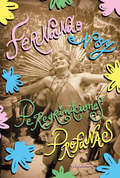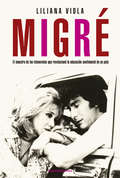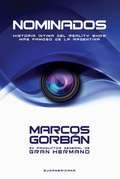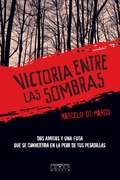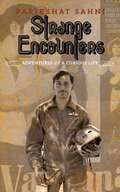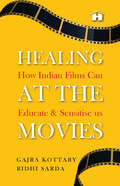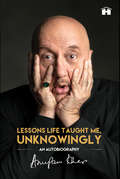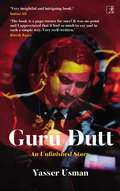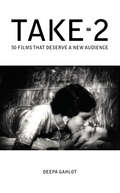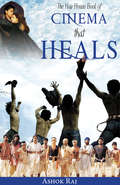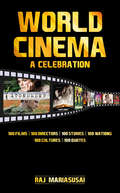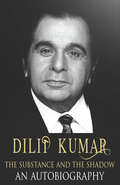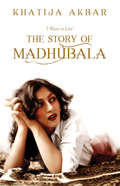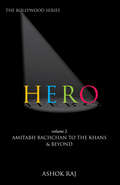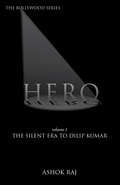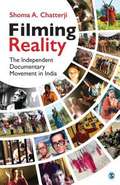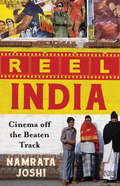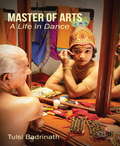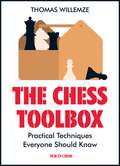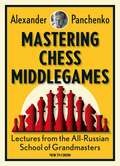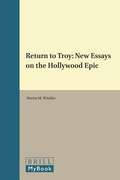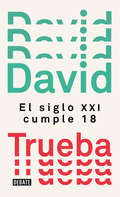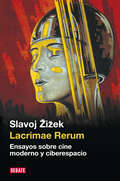- Table View
- List View
Peregrinaciones profanas
by Fernando NoyElegido Reina del célebre carnaval de Salvador Bahía, personaje central de la vida cultural argentina y animador gay inigualable de la escena under desde hace cuatro décadas, Fernando Noy cuenta todo en un libro imperdible donde conviven lo más granado de los habitués de los bares porteños de los 60 a las leyendas del tropicalismo. De Pizarnik a Caetano Veloso, de Mercedes Sosa a Tanguito, de Sumo a María Luisa Bemberg, Noy se ha convertido en el cronista más desenfadado de una historia que pedía a gritos su Homero. «¿Quién nos quita lo brillado?, se pregunta Fernando Noy y sigue el consejo de su amigo Pedro Lemebel que solía decirle, con sabiduría de Machi: 'No hables más, Noy: escríbelo'. Y finalmente lo hizo. Aquí están sus memorias, estas Peregrinaciones profanas, puro vértigo de purpurina, cemento y rincones donde el desamparo se convierte en jardín secreto. El propio nacimiento anunciado por la caída de un jinete mapuche; una cartografía del deseo suburbano con las locas del Oeste en los años 60; los náufragos hippies en flor; las temporadas en París o Bahía. Y, por supuesto, las amistades sagradas de Alejandra Pizarnik, Marosa Di Giorgio, María Luisa Bemberg, Batato Barea, Paco Jamandreu, Alejandro Urdapilleta y tantos más. Entre carnavales, lisergia y poetas, desfilan las deidades de Noy y él nos bendice con su misticismo afro-celta, sus túnicas y collares, su inefable paso andrógino que es maravilla, desafío y carcajada.»Mariana Enríquez «Cuando no existía la palabra queer la poeta, la vedette, la actriz, nuestro Fernando Noy, la estaba inventando. Lean estas memorias danzantes de la reina de la fiesta de la libertad y el arte.»Gabriela Cabezón Cámara «Sabíamos que Noy, poeta 24 horas, tenía el don de adelantarse al futuro. Ahora sabemos que es capaz de atravesar la memoria de su tiempo y recuperar un pasado por venir, impredecible, lleno de promesas.»Liliana Viola Noy va narrando un laberinto de encuentros increíbles, pero siempre reales. De la niñez patagónica a la adolescencia del yire hermafrodita con las locas del Oeste en los 60, a la fugaz militancia frustrada por su homosexualidad. El nacimiento alucinógeno y anfetamínico de venta libre en farmacias del hippismo se sobrexpone con el descubrimiento de la bohemia del Di Tella. La crónica de sus amistades son el índice onomástico de la Historia de la Cultura y el Espectáculo de la Argentina de la segunda mitad del siglo XX. Cuando la Junta Militar prohibía los carnavales, Noy se coronaba reina en Bahía, donde se había exiliado. Trepado al árbol de un neuropsiquiátrico parisino donde había sido internado por tratar de recuperar "sus" joyas de faraona en medio de un viaje con drogas, ve llegar a Jackie O. y María Callas al hospital donde acababa de morir Aristóteles Onassis... Quien se anime a seguir, en estas páginas plagiadas a sí mismo, su incesante deambular, encontrará un mundo fantástico, sobreimpreso con purpurina, visible de noche. Y también para quienes buscan las claves de una fiesta eterna y compartida.
Migré: El maestro de las telenovelas que revolucionó la educación sentimental de un país
by Liliana ViolaBiografía del creador de telenovelas célebres como Rolando Rivas, taxista, Piel naranja, Pobre diabla y Una voz en el teléfono, que moldearon la historia sentimental de generaciones de argentinos. Lo llamaron "el señor éxito", "el padre de la lágrima" y "el autor del amor". Escribió más de 700 títulos sin más colaboradores que su máquina Remington. Sus telenovelas fueron una verdadera factoría de galanes, parejas románticas y canciones inolvidables. Durante cuatro décadas tuvo en sus manos las emociones domésticas de las tardes y las noches. Con Rolando Rivas taxista, la ficción más recordada de la televisión argentina, conquistó al público masculino y marcó un nuevo estándar en el modo de producir y mirar tv. Se atrevió a plantear un final infeliz en Piel Naranja en vísperas de la dictadura de 1976 e impuso una palabra guaraní -"rojaiju"- en el lenguaje amoroso de los años 70'. Ultimo representante de la telenovela de autor, Alberto Migré sentó las bases de una industria de los sentimientos que se volvió global. En este libro apasionante Liliana Viola construye una biografía a la medida de su personaje donde cada secreto revelado abre las puertas de un secreto mayor. Actores y actrices, directores, admiradores y amigos íntimos aportan testimonios desopilantes y conmovedores para el retrato del hombre que patentó un modo de amar alternativo a la vida real y supo denunciar como ninguno la influencia nefasta del machismo en las relaciones humanas y el factor melodrama en los rencores que signan la política argentina.
Nominados: Historia íntima del reality show más famoso de la Argentina
by Marcos GorbanHistoria íntima del reality show más famoso de la Argentina. Gran Hermano es el reality show más importante del mundo. El de mayoresaudiencias, el de mayor facturación, el que más fantasías despierta. ¿Los drogan? ¿Les dan alcohol para que tengan sexo? ¿Está todo arreglado?¿Por qué están tomando sol todo el día sin hacer nada? ¿Están guionados?Los mitos que se tejieron alrededor del programa son muchos. Y han idocambiando a través de los años. Pero hay muchas historias que el públicoy la prensa desconocen. ¿Cuál fue la trastienda de los castings, de lasgalas en vivo, de las decisiones que más impacto tuvieron, desde laconfesión de homosexualidad de Gastón hasta la inclusión de un expresidiario en 2007?
VICTORIA ENTRE LAS SOMBRAS (EBOOK)
by Marcelo Di MarcoSe sentía tan odiado que decidió fugarse para siempre con su mejor amiga: estaba harto del miedo, los golpes y las amenazas de los adultos. Todo empezó como una inocente aventura. Pero ninguno de los dos podía sospechar el espanto que los esperaba. Un ruinoso barrio de pescadores, las playas de Punta Mogotes, un bosque laberíntico y un parque de diversiones abandonado son los escenarios de este brutal y vertiginoso thriller de supervivencia. Con un lenguaje crudo y provocador, el autor sabe alternar el humor con la crueldad, el suspenso y el terror extremo.
Strange Encounters: Adventures of a Curious Life
by Parikshat SahniDrawing its wisdom from Hindu, Judaic and Islamic philosophies, this is the multicultural, multifaceted saga of Parikshat Sahni's journey from being a film student in Soviet Russia to surrendering Stanislavski for Indian cinema. Strange Encounters is a prismatic collection of travel portraits, impressions and life lessons that Parikshat Sahni has accumulated in his itinerant life moving within the golden autumns of Moscow to the tune of Tchaikovsky, returning to Mumbai and his roots, entering Bollywood, and finding fame. Sahni chronicles stories from a life whose pendulum swings wildly from the humorous to the utterly horrifying. He confronts his thanatophobia on film sets and his atheism on an ill-prepared trek to Amarnath; he gives us drinking lessons with screenwriter friends and a profound insight into the state of culture wars in present-day Kashmir; he recalls the thrill of young love in Russia and its attendant treacheries of the heart, as well as a study of Pakistan, a history of India as the land of many, and a look at the current political discourse through the eyes of a refugee.
Healing at the Movies: How Indian Films Can Educate and Sensitise Us
by Gajra Kottary Ridhi Ridhi SardaPopcorn tub ready. Phone on silent. Back reclined. Lights dim. Let the magic begin!The Indian cinema has a power over us like no other. Be it the cast, the songs, the story, or the message, film-viewing as an experience is much more than just for &‘entertainment, entertainment, and entertainment&’. Be it a good movie or bad, we love to discuss, debate, and analyse. There is no denying that they stay with us for a long time, because bade-bade deshon mein aisi chhoti-chhoti baatein hoti rehti hain.Healing at the Movies is a book about cinema and its impact on us. Apart from the glitz, the glamour, and the sparkle, films can subconsciously influence our thoughts and how we react to situations in life. The three uninterrupted hours that we give, we share each character&’s pain and problems as much as their joys and celebrations. This is where reality and fiction merge together . . . where a song and dance sequence can teach us more about society than society itself. *Cue the song: Khalbali hai khalbali*Every film is a reflection of its times. This book is a treasure trove of movies made on pertinent social issues that will not only rekindle your love for the Indian cinema but also make you a better, informed human being. So, what are you waiting for? Picture abhi baaki hai mere dost ...
Lessons Life Taught Me, Unknowingly: An Autobiography
by Anupam KherAn extraordinary, riveting and no-holds-barred saga studded with fascinating behind-the-scenes revelations, anecdotes and rare nuggets of lessonsAnupam Kher’s life story is nothing short of a grand masala box office hit. It has drama, comedy, romance and even action! Who knew that a small-town Shimla boy would one day become one of the most recognised actors in the world and go on to win various national and international awards for his contribution in the field of cinema and arts?A powerhouse of talent with over 530 films (and counting) in his repertoire, Anupam Kher stands out not only because of his iconic bald head, but also for his forthright views and opinions, however controversial they may be. He has always been distinct and offbeat. His autobiography is, too . . . for it is not just another chronological account of his life. It is, in fact, also peppered with incredible life lessons that are bound to resonate with every aspiring artiste and, most of all, the common man.Here is a kaleidoscopic peep into the life and times of a true genius and forever entertainer.
Guru Dutt: An Unfinished Story
by Mr. Yasser UsmanGuru Dutt&’s filmography has some names which have long been considered as some of the best films to have ever been made in India. His masterpiece Pyaasa (1957) was featured in TIME magazine's All-Time 100 Movies list in 2005. His films are still celebrated and revered by viewers, critics and students of cinema the world over, not only for their technical brilliance but also for the eternal romanticism and their profound take on the emptiness of life and the shallowness of material success. He was Indian cinema&’s Don Juan and Nietzsche rolled into one. But while much has been said and written on the film-maker and his art, little is known about his life behind the screens. This richly layered account takes a deep dive into the journey of a lonesome, troubled genius who was endlessly being pulled in contrary directions throughout his life. A child prodigy, who actually began as a dancer learning from the great Uday Shankar, an unconventional film-maker who desired commercial success without ever compromising on artistic satisfaction, a self-made entrepreneur who hated numbers yet single-handedly ran a film studio juggling the roles of a producer, director, actor, financier — all this while struggling silently with a deeply troubled personal life, at the centre of which was his tumultuous marriage with Geeta Dutt. Guru had it all — love, family, money, fame and validation from his audience. His untimely death by suicide, that too after multiple failed attempts, had shocked the entire film industry. But what led to that fateful night when he tipped his hat and said his final goodbye? Best-selling Bollywood biographer Yasser Usman explores the man and the myth Guru Dutt in this definitive biography of a nonconformist star, uncovering the extraordinary lives of the rich and the famous as well the incredible toll it takes on the emotional and mental health of a human being. With cameos from close friends and colleagues Dev Anand, Waheeda Rehman, Johnny Walker, S.D. Burman and most significantly Dutt&’s sister, noted painter Lalitha Lajmi, a short but compassionate, ambitious and ultimately tragic life reveals itself in the pages of this book. This is a gripping, meticulously researched and moving portrait of an unfinished life — a tale of unrequited love, unresolved relationships and unmatched cinematic talent.
Take-2: 50 Films That Deserve a New Audience
by Deepa GahlotAn essential resource for scholars, connoisseurs and serious fans of Indian cinema, Take-2 makes for an entertaining, informative and nostalgia-filled read In the last few years there has been a glut of books on Indian cinema but most of them focus on the life and times of famous stars or celebrate popular film classics. Even though information and film trivia are now easier to access than ever before, some films have completely disappeared with not even a single print available due to reasons both tragic and strange. Also lost in time are some filmmakers and actors who once added their bit to the history of Indian cinema but have now simply vanished from our collective memory.In Take-2, Deepa Gahlot reacquaints or introduces us to 50 films (and many artistes) that merit our attention. While some on this list were chosen because they were the first Indian films of their kind, or were obscure films by well-known directors, others deserve mention because they were by creative talents whose contribution to Hindi cinema has been overlooked. Gahlot’s mission to rescue and preserve these forgotten gems should inspire us to go back and take another look.
The Hay House Book of Cinema that Heals
by Ashok RajA unique volume that highlights – tellingly and poignantly – how the impact of the Hindi film over the decades has played a significant role in trying to bring together people belonging to different faiths and different strata of society. Covering a vast time span from the silent era to the present, this work focuses on Hindi cinema’s attempts at promoting harmony and trust among various religions, communities and ethnic groups, while performing its basic function of entertaining the viewers. It identifies appropriate situations and characters in select films – such as Padosi (1941), Hum Ek Hain (1946), Mughal-e-Azam (1960), Dharamputra (1961), Amar Akbar Anthony (1977), Ghulam-e-Musthafa (1997), Lagaan (2001) and Veer-Zara (2004) – and describes how positive messages have been articulated through them. It also examines the response of the film makers to the changes that have been taking place over the years in society vis-à-vis the communal milieu in the country and their contribution towards making a cinema that heals. Ever since its inception a century ago, Indian cinema, far more than other popular cultural medium, has consistently taken up highly appealing and socially relevant interpretations of popular religious beliefs and customs. It has often attempted to ensure that the audiences identified themselves with the characters as they enacted their roles on screen. This cinema, though dominated by love stories and romantic escapism, has, occasionally, sent out a powerful message against age-old religious orthodoxy and outdated traditions by emphasizing that such factors have caused tremendous social tensions and suffering. In a very significant way, Indian cinema has tried to systematically break down religious and other barriers (say, ethnic, language, caste and class) and has endeavoured to engender an egalitarian society despite numerous obstacles. Here is a work that all readers, film buffs or not, will find stimulating, engrossing and informative.
World Cinema: A Celebration
by Raj MariasusaiA unique collection – entertaining, stimulating, heart-warming and thought-provoking – that brings together a wide variety of films from all corners of the world In this volume, the author declares that ‘watching world cinema is like going around the globe, visiting places and meeting people’. In fact, it opens windows that reveal new vistas, new lands, new cultures and new lifestyles, without ever having to make a single journey abroad! In World Cinema: A Celebration, we come across an assortment of talents that make us experience the complexities of human behaviour in different parts of Planet Earth. The 100 films from different countries (arranged alphabetically and chosen from 1990 onwards) portray the distinct socio-economic conditions prevailing in a particular nation. Here’s a kaleidoscope that offers vivid, fascinating and ever-changing patterns vis-à-vis the moving and talking images.
Dilip Kumar: The Substance and the Shadow
by Dilip KumarAn authentic, heartfelt and compelling narrative – straight from the horse’s mouth – that reveals for the first time numerous unknown aspects of the life and times of one of the greatest legends of all time who stands out as a symbol of secular India. Dilip Kumar (born as Yousuf Khan), who began as a diffident novice in Hindi cinema in the early 1940s, went on to attain the pinnacle of stardom within a short time. He came up with spellbinding performances in one hit film after another – in his almost six-decade-long career – on the basis of his innovative capability, determination, hard work and never-say-die attitude.In this unique volume, Dilip Kumar traces his journey right from his birth to the present. In the process, he candidly recounts his interactions and relationships with a wide variety of people not only from his family and the film fraternity but also from other walks of life, including politicians. While seeking to set the record straight, as he feels that a lot of what has been written about him so far is ‘full of distortions and misinformation’, he narrates, in graphic detail, how he got married to Saira Banu, which reads like a fairy tale!Dilip Kumar relates, matter-of-factly, the event that changed his life: his meeting with Devika Rani, the boss of Bombay Talkies, when she offered him an acting job. His first film was Jwar Bhata (1944). He details how he had to learn everything from scratch and how he had to develop his own distinct histrionics and style, which would set him apart from his contemporaries. After that, he soon soared to great heights with movies such as Jugnu, Shaheed, Mela, Andaz, Deedar, Daag and Devdas. In these movies he played the tragedian with such intensity that his psyche was adversely affected. He consulted a British psychiatrist, who advised him to switch over to comedy. The result was spectacular performances in laugh riots such as Azaad and Kohinoor, apart from a scintillating portrayal as a gritty tonga driver in Naya Daur. After a five-year break he started his ‘second innings’ with Kranti (1981), after which he appeared in a series of hits such as Vidhaata, Shakti, Mashaal, Karma, Saudagar and Qila.
I Want to Live: The Story of Madhubala
by Katijia AkbarMadhubala – the very name conjures up vivid images of a love goddess possessing bewitching beauty, dazzling radiance, subtle sensuality, and, above all, a tantalizing screen presence. Her ‘reel life’ histrionic performances held (and continue to hold) audiences/viewers entranced. Her talent was phenomenal, and she could literally glide through a movie, whatever be the role. She could convey an impressive array of emotions with her eloquent eyes and facial expressions without resorting to melodramatic contortions. Tragedy, romance, comedy, drama, and what have you – she could take everything in her stride, exquisitely and flawlessly, as convincingly proved by superhits such as Mahal, Tarana, Chalti Ka Naam Gaadi and the magnum opus, Mughal-e-Azam. All this she achieved despite a major heart disease, which assumed serious proportions as her career soared. This volume presents a fascinating panorama not only of the ‘reel life’ Madhubala but also of the ‘real life’ Madhubala, who was an extremely compassionate and caring human being, but lived in the shadow of her dominant father. The author recounts her captivating saga, right from her first film – Basant (1942), as a child star, up to the magnificent Mughal-e-Azam (1960) and beyond. Enthralling cameos from her masterpieces such as Mahal, Mr & Mrs 55 and Amar, are depicted in graphic detail. Also, all the drama involved in her love affair with Dilip Kumar, which culminated in intense acrimony, has been poignantly portrayed. The last few years of her life were spent in virtual solitude in spite of her being married to Kishore Kumar, and death, in a way, came as a release for her.
Hero Vol.2: Amitabh Bachchan To The Khans And Beyond
by Ashok RajThis volume focuses on the life and times of the ‘star of the millennium’, Amitabh Bachchan, and goes on to describe his contemporaries such as Shashi Kapoor, Dharmendra and Vinod Khanna, and also the next generation of heroes, including the Khans, Govinda, Hrithik Roshan and others who have followed. Ashok Raj is a research coordinator based in New Delhi. An alumnus of the Indian Institute of Technology, New Delhi, he has served as a consultant to several national and international organizations and NGOs in various spheres such as science, culture and the media. His significant work is a sixteen-part series on cinema, which was published in Screen (in 1988).
Hero Vol.1: The Silent Era To Dilip Kumar
by Ashok RajThis volume traces the growth of the indigenous Hindi film hero from the silent era up to Dilip Kumar. The film hero is depicted as a credible representative of the social, cultural and political milieu of his era. The author contends that the development of Hindi cinema has been largely centered round the frontal figure of the hero. In the course of the narrative, the subject matter presents a compact history of mainstream Hindi cinema by placing personalities, events and trends in specific time frames.
Welcome to Advertising! Now, Get Cost
by Omkar SaneA 24-year-old who has spent not more than a few weeks in advertising, sums up the profession, its practitioners and their practices in a hilarious send-up of human nature and human pomposity.
Filming Reality: The Independent Documentary Movement in India
by Shoma A. ChatterjiAn informative read about the incredible journey of the independent documentary film movement in India. Filming Reality explores the independent documentary film movement in India post-1970s, when it began to acquire an identity of its own and many films got worldwide recognition. It analyses notable documentaries made over the last four decades, including those by iconic film-makers such as Satyajit Ray, Mani Kaul, Anand Patwardhan; activists such as Rakesh Sharma, Ranjan Palit, Amar Kanwar; feminists such as Deepa Dhanraj and Madhusree Dutta; and auteurs such as Sanjay Kak, R. V. Ramani and others. Featuring a compilation and analysis of noted and rare documentaries, this book is of immense value to film buffs, film scholars and film-makers.
Reel India: Cinema off the Beaten Track
by Namrata Joshi‘Picture abhi baaki hai…’ If there’s one experience that unites India, it is cinema. In Reel India, award-winning film critic Namrata Joshi journeys through the interiors of the country intimately chronicling little-known accounts about the nation’s incessant obsession with the movies. In Lucknow, she encounters a Shah Rukh Khan fan who has embraced an alternate reality in which he lives and breathes the star. In Wai, she finds an entire economy fuelled by the film industry as the town transforms into a film set. An activist filmmaker in Odisha demonstrates how he teaches local tribal people the basics of his craft, empowering them to train the spotlight on issues threatening their habitat and livelihood. From the fever pitch of the ‘first day first show’ in makeshift halls to the rivalries of regional cinema, this is India’s immersion in the movies like it’s never been seen before. Filled with real-life stories that are as fascinating as the revelations and insights they offer, Reel India raises the curtain on the starry-eyed dreams and big-screen passions that live on after the final ‘cut’ is announced.
Master of Arts: A Life in Dance
by Tulsi BadrinathV.P. Dhananjayan was one of the first men to make a successful career as a Bharata Natyam dancer. In the late sixties, when he made this choice, Bharata Natyam ? the classic dance form that Rukmini Devi helped evolve from the dance of the devadasis ? was almost exclusively the domain of women. In making Bharata Natyam his profession, Dhananjayan had to create a space for his dance where none existed. It is only recently, in the relatively short span of the past seventy years, and to a great extent because of the creative efforts of versatile and innovative dancers like Dhananjayan, that greater number of men have performed Bharata Natyam as men, without needing to dress as women to appear on stage. As Dhananjayan?s student for nearly forty years now, and a trained dancer herself, the author, Tulsi Badrinath, chronicles the story of his brilliant life in dance with the insight of one who understands each nuance of it. Weaving her own life-long passion for Bharata Natyam with his remarkable story, she brings to light the difficulties faced by a male dancer in establishing himself in what was thought to be a somewhat unrespectable profession, and tells the compelling story of his life with empathy and understanding. Writing of his years in Kalakshetra and his departure from it; of the deep love that blossomed between him and his wife, Shanta, and the incredible dance partnership they forged, making them famous as The Dhananjayans; of his international collaborations with Ravi Shankar; and of his ability, as guru and teacher, to impart his passion for dance to his disciples, she explores her own understanding of what the dance, and her guru, have meant to her. Interspersing this remarkable tale of guru and shishya with the stories of other young male dancers in the realm of Bharata Natyam, she pays tribute to their extraordinary commitment, their talent and their courage.
The Chess Toolbox: Practical Techniques Everyone Should Know
by Thomas WillemzeIn chess, as in repair or construction jobs in and around the house, you will not get very far without the right equipment. If you want to win more games you simply need the right tools.
Mastering Chess Middlegames: Lectures From The All-Russian School Of Grandmasters
by Alexander PanchenkoThe book contains a collection of inspiring lessons on the most important middlegame topics: attack, defence, counterplay, realising the advantage, obstructing the plans of your opponent, the battle of the heavy pieces, and much more. In each chapter, Panchenko clearly identifies the various aspects of the topic, formulates easy-to-grasp rules, presents a large number of well-chosen examples and ends with a wealth of practical tests.
Return to Troy: New Essays on the Hollywood Epic
by Martin M. WinklerReturn to Troy presents essays by American and European classical scholars on the Director's Cut of Troy, a Hollywood film inspired by Homer's Iliad. The book addresses major topics that are important for any twenty-first century representation of ancient Greek myth and literature in the visual media, not only in regard to Troy: the portrayals of gods, heroes, and women; director Wolfgang Petersen's epic technique; anachronisms and supposed mistakes; the fall of Troy in classical literature and on screen; and the place of the Iliad in modern popular culture. Unique features are an interview with the director, a report on the complex filming process by his personal assistant, and rare photographs taken during the original production of Troy.
The Art of Chicago Improv: Short Cuts to Long-Form Improvisation
by Rob KozlowskiIn this book the author traces the history and growth of acting in Chicago.
El siglo XXI cumple 18
by David TruebaUna reveladora recopilación de artículos con la que David Trueba pasa revista a los primeros dieciocho años de nuestro siglo. «Hay cosas que pasan y que de tanto pasar terminan por definir los tiempos mucho mejor que las teorías.» Con estas palabras, el novelista, cineasta y periodista David Trueba sintetiza el cometido de esta recopilación de artículos periodísticos. Los artículos se centran en hechos, no en opiniones, y analizan los verdaderos significantes de nuestro tiempo. Porque cuando el siglo XXI llega a la mayoría de edad, ya no se trata de analizar los cambios y escuchar los latidos renovadores: nos encontramos ante algo ya impuesto, ante una nueva manera de ser. De entre los sucesos que marcan estos dieciocho años de vida de nuestro siglo, Trueba destaca la emigración y su impacto en los miedos colectivos; la identidad tanto sexual e íntima como nacional y colectiva; la crisis de la democracia y sus representaciones cotidianas, reducidas a lo electoral y sus alternancias; y, finalmente, la transformación tecnológica con el consiguiente impacto en el empleo y la economía de a pie. El siglo XXI cumple 18 se convierte así en una revisión de algunos de los asuntos de la actualidad que más nos perturban y que, nos guste o no, están aquí para quedarse.
Lacrimae rerum: Ensayos sobre cine y ciberespacio
by Slavoj ZizekConsiderado el «séptimo arte», el cine ha sido y sigue siendo uno de los medios de comunicación de masas más importantes. <P><P>Desde la primera función en el sótano del Grand Café des Capucines de París hace algo más de cien años, hasta las grandes superproducciones de Hollywood que dominan las pantallas del mundo, el cine ha sido técnica e industria, entretenimiento y vehículo de expresión de ideas y sentimientos. <P><P>Partiendo de estas consideraciones y estudiando la labor de reconocidos directores, el filósofo y psicoanalista Slavoj Zizek, profundo conocedor del universo cinematográfico y de la influencia de los medios de comunicación en la sociedad contemporánea, reflexiona sobre los temas principales de estos maestros y sus motivaciones a la hora de situarse detrás de la cámara. <P><P>De la imposibilidad de hacer remakes de las películas de Alfred Hitchcock al pesimismo en la obra de Krzysztof Kieslowski; de la imagen de la mujer, la irracionalidad y la angustia en los trabajos de Andrei Tarkovski y David Lynch a la posibilidad imaginaria o real de desplazarse a través del tiempo y el espacio como los personajes de Matrix, Zizek desarrolla su imaginación crítica y su agudo sentido literario para atrapar al lector con imágenes, ideas y revelaciones que sorprenderán no solo a los buenos aficionados al cine, sino también a todos aquellos que deseen acercarse a los clásicos de la pantalla de la mano de este original y provocador filósofo.
